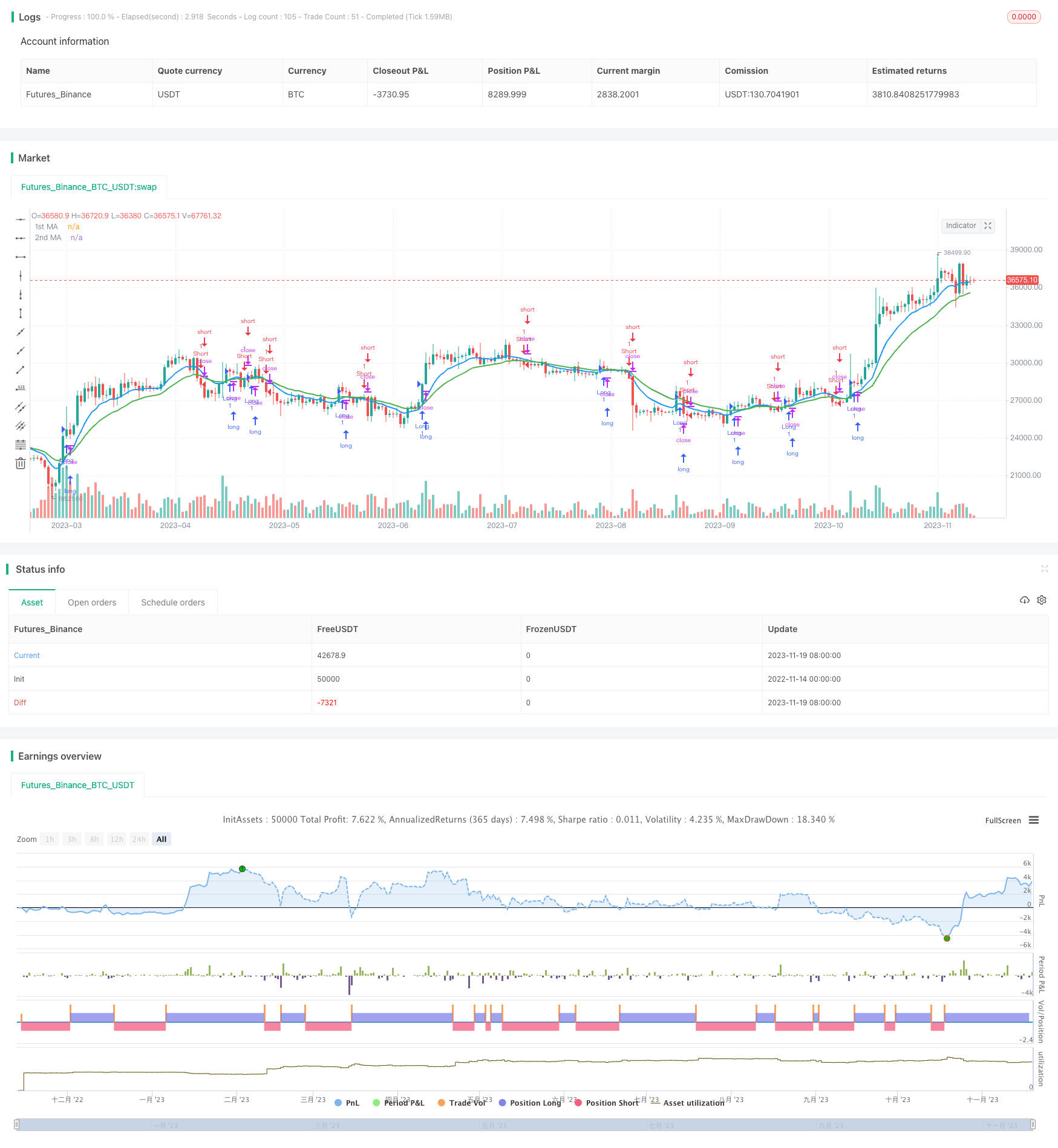
概述
双移动平均线突破策略是一个较为典型的趋势跟踪策略。它通过计算两条不同周期的移动平均线,并以其交叉作为买入和卖出信号,来捕捉市场趋势的方向和力度。
策略原理
该策略主要基于两个移动平均线。第一个移动平均线的周期较短,可以更快地响应价格变化;第二个移动平均线周期较长,可以过滤掉部分噪音。当短期移动平均线上穿长期移动平均线时,视为买入信号;当短期移动平均线下穿长期移动平均线时,则为卖出信号。
具体来说,该策略计算了10周期的指数移动平均线(price1)和20周期的指数移动平均线(price2)。如果当前K线的开盘价和收盘价都高于两条移动平均线,则产生买入信号;如果当前K线的开盘价和收盘价都低于两条移动平均线,则产生卖出信号。
通过这样的设计,可以在趋势开始形成时较早地进入市场,并跟踪趋势;当趋势反转时,也可以尽早退出市场,有效控制风险。
策略优势
- 捕捉趋势早期,跟踪强劲趋势
- 双均线过滤,避免部分假突破
- K线开盘价和收盘价双确认,减少无效交易
策略风险
- 双均线策略容易产生较多的反向交易
- 双均线运行时可能出现频繁交叉信号
- 参数优化空间大,不当优化可能导致过拟合
策略优化方向
- 测试不同参数组合,寻找最优参数
- 增加止损策略,降低单次损失大小
- 增加过滤条件,减少无效交易
- 结合其他指标确认信号有效性
总结
本策略整体来说较为简单实用,通过双均线交叉原理捕捉趋势,是量化交易的一个基础策略。但该策略也存在一定的风险,需要进一步优化以适应不同市场环境。在参数调整、止损机制、信号过滤等方面都有优化空间,可以使策略更稳定可靠。
策略源码
/*backtest
start: 2022-11-14 00:00:00
end: 2023-11-20 00:00:00
period: 1d
basePeriod: 1h
exchanges: [{"eid":"Futures_Binance","currency":"BTC_USDT"}]
*/
//@version=3
//study(title="MA River CC v1", overlay = true)
strategy("MA River CC v1", overlay=true)
src = input(close, title="Source")
price = request.security(syminfo.tickerid, timeframe.period, src)
ma1 = input(10, title="1st MA Length")
type1 = input("EMA", "1st MA Type", options=["SMA", "EMA"])
ma2 = input(20, title="2nd MA Length")
type2 = input("EMA", "2nd MA Type", options=["SMA", "EMA"])
price1 = if (type1 == "SMA")
sma(price, ma1)
else
ema(price, ma1)
price2 = if (type2 == "SMA")
sma(price, ma2)
else
ema(price, ma2)
//plot(series=price, style=line, title="Price", color=black, linewidth=1, transp=0)
plot(series=price1, style=line, title="1st MA", color=blue, linewidth=2, transp=0)
plot(series=price2, style=line, title="2nd MA", color=green, linewidth=2, transp=0)
buy_entry = (open>price1 and open>price2) and (close>price1 and close>price2)
sell_entry = (open<price1 and open<price2) and (close<price1 and close<price2)
buy_close = sell_entry
sell_close = buy_entry
//longCondition = crossover(price1, price2)
if(buy_entry)
strategy.entry("Long", strategy.long)
if(sell_entry)
strategy.entry("Short", strategy.short)
strategy.close("Long" , when=buy_close)
strategy.close("Short",when=sell_close)